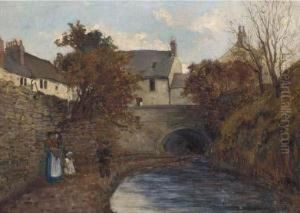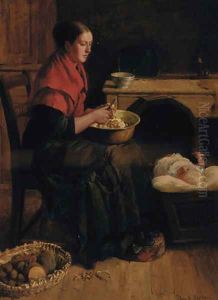Eben H. Murray Paintings
Eben H. Murray was an American artist known for his contribution to the world of lithography and etching. Born in 1862, Murray was a part of the vibrant art scene that characterized the late 19th and early 20th centuries in the United States. Throughout his career, he demonstrated a keen interest in capturing the essence of American landscapes and urban environments, setting him apart as a significant figure in the realm of printmaking.
In his early years, Murray was deeply influenced by the burgeoning art movements of his time, particularly the Realist and Impressionist movements, which sought to depict everyday scenes with a sense of immediacy and vibrancy. His dedication to his craft led him to explore various techniques in lithography and etching, mediums that allowed him the flexibility to experiment with textures and shades, thereby enriching his depictions of American life.
Murray's work gained recognition for its detailed portrayal of natural landscapes and cityscapes, imbued with a sense of nostalgia and tranquility. His ability to render intricate details and play with light and shadow brought his scenes to life, earning him accolades and a place in several prestigious collections and exhibitions throughout the United States.
Despite the acclaim, Murray remained a somewhat elusive figure in the art world, focusing more on his artistic explorations than on self-promotion. His dedication to his craft was evident in his continuous evolution as an artist, always seeking new methods to express his vision of the American landscape.
Eben H. Murray passed away in 1934, leaving behind a legacy of artistic achievements that continue to be celebrated for their contribution to American art history. His works serve as a testament to his skill and passion, capturing the essence of an era and its landscapes with a timeless quality that continues to resonate with art enthusiasts and historians alike.

